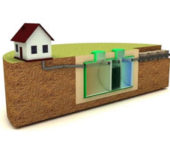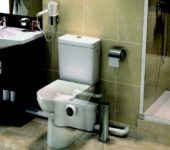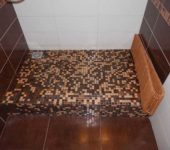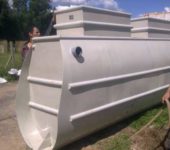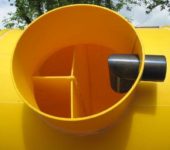Air Sewer Valve
Sometimes there is such a situation when a smell from the sewer leaks in the bathroom or toilet. In its normal state, it is cut off by water seals. This is a certain amount of water that remains in the bend of the siphon and blocks access to the apartment for gases from the sewer. Sometimes, with the simultaneous operation of several plumbing fixtures, these gates break off - a sharp change in pressure occurs, which pushes the water, sewer gases break into the room. To prevent such situations from arising, an air valve is installed for the sewage system. It neutralizes most of all air pressure differences in the system.
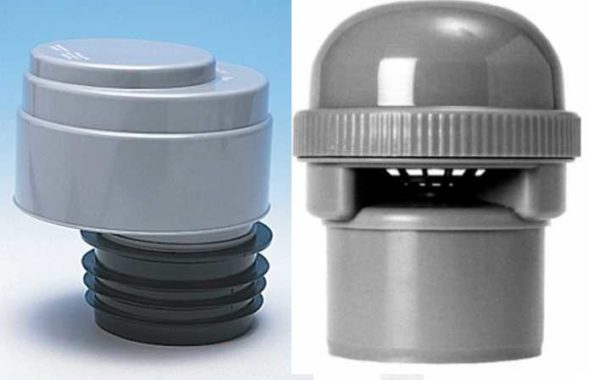
The most common types of air valve for sewerage
The content of the article
Principle of operation
An air drain valve is required in the system to equalize the negative pressure. It occurs when a sudden discharge of water in large quantities (descent toilet bowl, pouring out a bucket of water, etc.), which carries a large amount of air with it. In the normal state, air is sucked in through the fan riser, the pressure is stabilized, no unpleasant odors are observed.
But situations arise when the amount of air entering through the fan riser is not enough for the water to leave freely. That's when the smell appears. In case of air shortage, the resulting negative pressure breaks the weakest water seal. This means that the water that stands in the knee of the siphon (washbasin, sink, drain under the bathroom) is partially sucked into the sewer system, opening access to sewer gases. Until you use this device, air from the sewer enters the bathroom / toilet. This is not only unpleasant but also dangerous. The sewer atmosphere contains not only methane, which in itself is not a gift. There may be bacteria, spores of various fungi, microorganisms.

Principle of operation
So that the water seal does not break down and an air valve is installed for the sewage system. It has several other names - vacuum valve, vent drain valve and aerator. In principle, it is the "aerator" that better reflects the purpose of this device, but this term is rarely used.
The principle of operation of a sewer air valve is simple. There is a diaphragm which, under normal or positive pressure in the system, is adjacent to the valve body. In this position, the system is sealed, air from the sewer is blocked. When a negative pressure occurs in the pipe (when the water is drained), the membrane rises, air is sucked in from the room into the sewer (not vice versa), quickly neutralizing the resulting drop. Everything happens with lightning speed, the water locks on the sanitary devices remain in place and continue to block the access of sewer gases to the room.
Is there some more sewage check valve... It solves the problem of backflow of drains with clogged risers. How to get rid of a blockage in pipes read here.
Where to put
When installing, the air valve for the sewer must be placed 20-30 cm above the axis of the main sewer pipe. In two and three-storey private houses, a device is installed on the top floor.
Install it in a place where splashes or dirt will not get on the membrane. The performance of the device depends on how clean the membrane is. Salt, grains of sand, debris, etc. will appear on it, it will not be hermetically pressed against the body, a stench will begin to seep into the room. By the way, if you observe this - for now, clean or change the membrane.
It is necessary to find a place such that air can freely flow to the membrane. These are the basic conditions for normal operation. When 1 liter of water falls into the sewer, it can carry 25 liters of air with it.Therefore, the access of air must be free.
If you decide to put the ventilation valve on the sewer, you need to know that sometimes during operation it can make "grunting" sounds - the membrane sucks in air when a small vacuum occurs in the pipe. Not all models behave this way, but there are such complaints. So it's better to find a place where these sounds (if any) will not interfere.
Do-it-yourself installation of a shower stall is described here.
In apartments
If we are talking about an apartment in a multi-storey building, then you can put an air valve on any vertical section of the pipeline. To do this, you can build a tee into the system, install a pipe vertically upward into it, and put a ventilation sewer valve on it. Globally, this will not solve the ventilation problem of the entire riser, but specifically your site will work without problems.
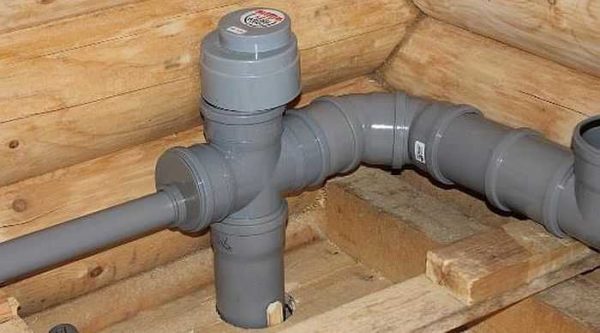
It is desirable to put it above the main sewer pipe
In a private house
If we are talking about a private house, then most often they want to install an air valve for the sewage system so as not to drain the drain pipe through the roof. The correct passage of the pipe through the roof is a difficult thing, it is not easy to achieve its tightness. This is often the reason that people do not want to perforate the roof. Still many people do not like the pipes sticking out over the house. In principle, you can take the ventilation pipe to the attic, put a ventilation sewer valve on top. In this case, the riser will be unventilated. But this is far from the best solution. At least that's what the plumbers say. They claim that for normal operation septic tank ventilation is needed - to provide bacteria with oxygen.
If your sewage is purified in a septic tank, you cannot do without a fan riser, you will have to remove it through the roof. If the hydraulic gates break down periodically, it will be possible to put an air valve for the sewage system as an additional element of the system - on the highest floor (you can not take it out to the attic).
If you have an autonomous sewage system based on autonomous cleaning stations, you can try to make it unventilated - insert the pipe into the attic, and put a vacuum valve on top of it. At the same time, the attic should be unexploited, large in volume, with good ventilation. The smell will be present and it will need to be taken out into the street in some way. If the attic is cold, the pipe must be insulated (but not the valve).
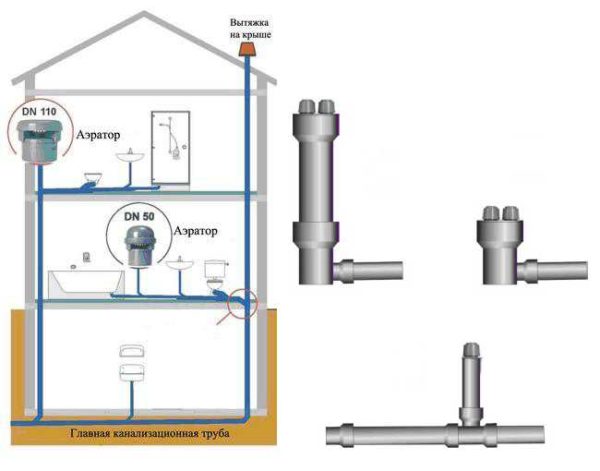
Where to put an air valve for sewage in a private house
And still, plumbers and designers insist that in private houses an air valve for the sewage system should be installed only as an addition to the fan riser.
Installation
For the most part, plastic sewers are installed in private houses and apartments. Air valves are also selected from the same material - PVC or polypropylene. Like any products for sewage, they have a socket at the end with a sealing rubber. The whole installation consists in putting the device on the prepared pipe. All.
For reliability, you can first coat the joint with plumbing sealant, but even without this measure, the connection is sealed (about the normal quality of the pipe and device).

